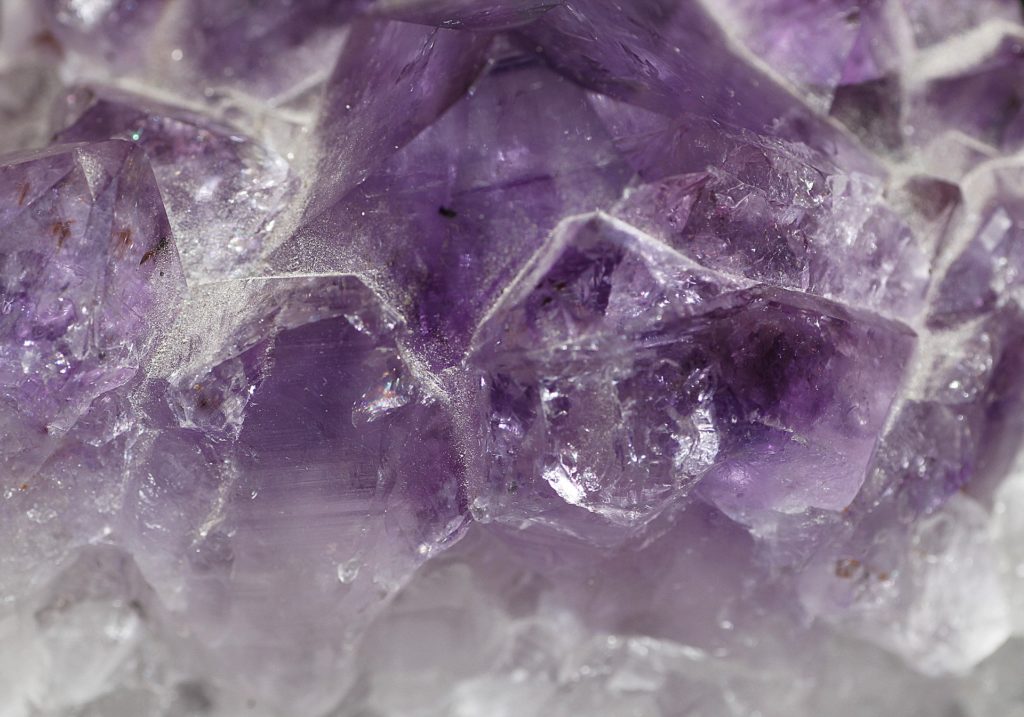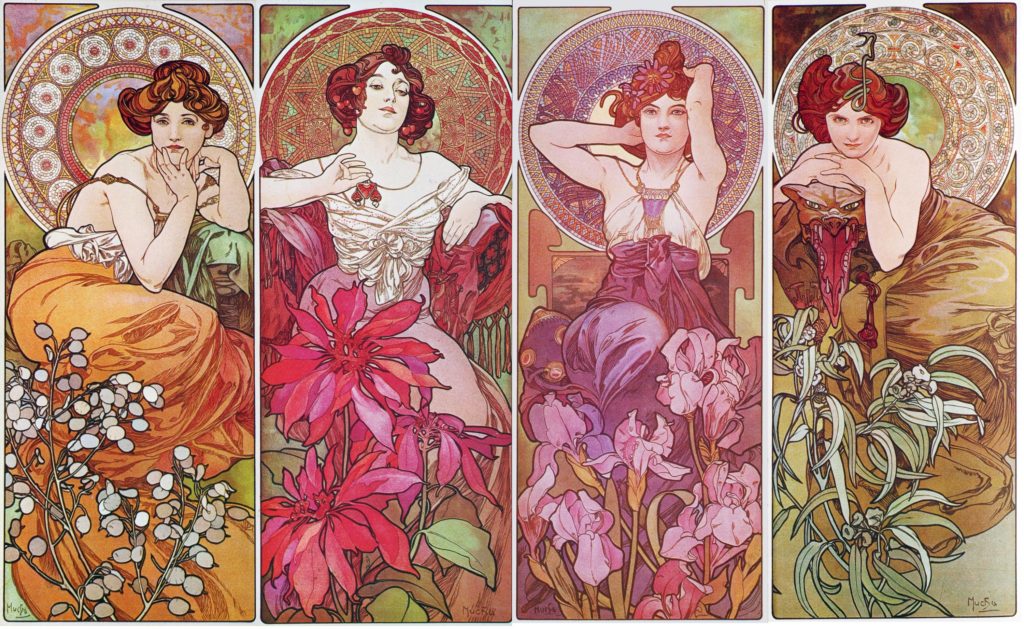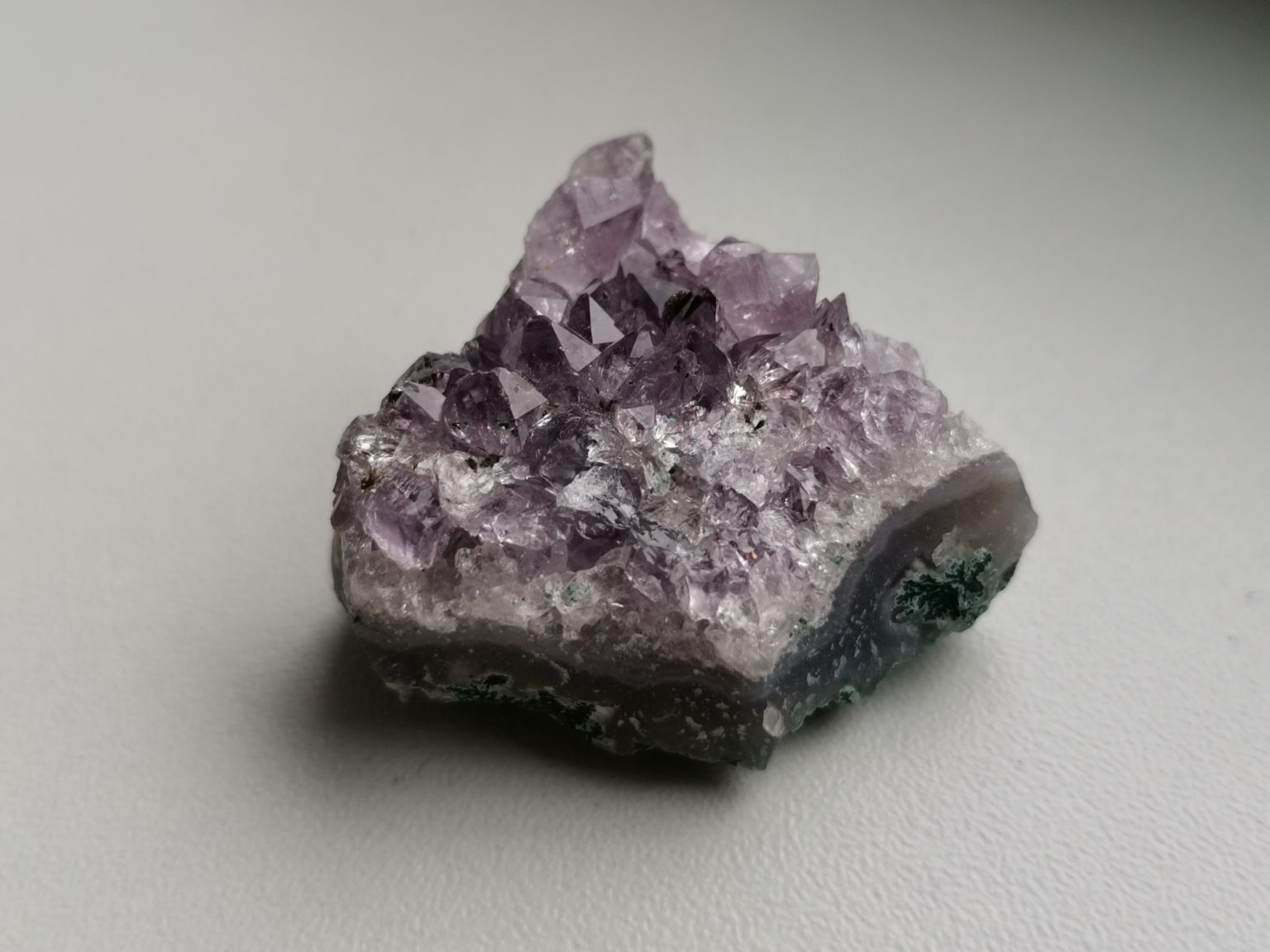I am very fond of jewels. I like not earrings and rings with them but gemstones themselves. It is a real pleasure to touch a gem and know that its exquisite beauty is destined for a long – almost eternal – life. If handled with care, every jewel will outlive every flower or butterfly, even every human.
I occasionally buy cheap semi-precious stones. My latest purchase is an amethyst druzy.
The day when I bought it was sunny; bright beams were playing in the crystals of the little nature miracle resting in my palm. I was going home in headphones and listening to the recording titled Amethyst – the first movement of the suite The Jewels written by the Latvian composer Jāzeps Vītols.
Amethyst’s color tends to vary from one zone of the crystal to another. The more transparent an area, the brighter it glisters in light.
Vītols’ music conveys the gentle shine of the gem with a melodic chime, which is especially well heard at the very beginning of the piece.
The dark parts of the mineral have a hue from pale lavender to deep violet color. The violet symbolizes wisdom. In the past, this gemstone was considered the jewel of the clergy and kings (up to the 18th century, it could cost as much as a diamond, yet then extensive deposits of amethysts were discovered, and they fell in price).

Amethyst by Jāzeps Vītols sounds so majestically that it definitely would be worthy of a noble king.
After reaching its peak around the middle of the movement, the solemnity of the music slowly declines.
It’s as if the composer took the lambent crystal out of a velvet box, showed us his treasure, and carefully put it back. While the lid was slamming, one of the facets managed to catch a sunray: the movement ends with a thin “ding”.
The Jewels also included the parts which describe emerald, pearl, ruby, and brilliant. There are no great ideas behind the suite. Music doesn’t always need a philosophical background; it can afford to be just mellifluous.
To my mind, Vītols’ piece, composed in 1924, was a farewell echo of La Belle Époque – the period of European history between the 1870s and 1914. That was the time of broad boulevards and cozy cafes, richly decorated façades and elegant interiors. People enjoyed life, so interesting, so promising thanks to the technical progress.
In 1914, World War I broke out. Europeans suddenly realized that progress meant not only radio receivers or photo cameras but also weapons of mass destruction.
Mines charged with the respiratory irritant diphosgene suffocated hundreds of soldiers. An aerial bomb could kill a common civilian, hurrying on routine business, in the blink of an eye.
There was no longer any talk of La Belle Époque.
However, the memory of it is preserved – in the art of the Modern Style. Here are four lithographs made by the Czech artist Alphonse Mucha in 1900:

Just like Vitols, Mucha creates “portraits” of particular precious stones. He invites us to admire topaz, ruby, emerald, and amethyst as well. Female figures personify them. The color scheme of each lithograph recalls the color of the gem.
I’m sure you have already guessed that amethyst is the third woman, the belle with irises. She appears dreamy but not defenseless at all. If necessary, she will instantly leave the world of sweet dreams and confidently look directly into your eyes.
Amethyst is a fairly durable gemstone.
- Latvijas kultūras vēsture (History of Latvian culture) – autoru kolektīvs, Rīga, Jumava, 2021
- Модерн: Климт, Гауди, Муха (The Modern Style: Klimt, Gaudi, Mucha) – Наталья Кортунова, Москва, АСТ, 2021

